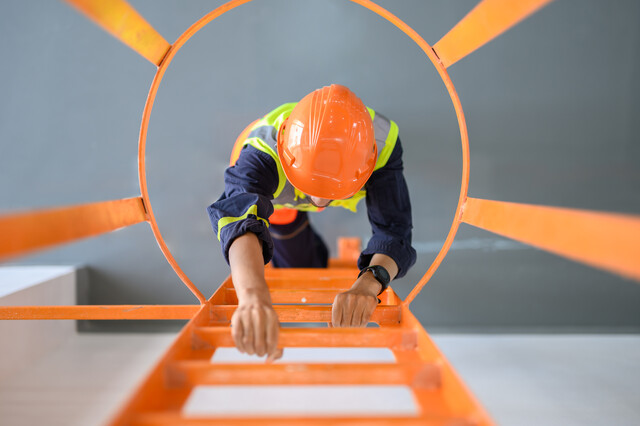| What is workplace safety? |
Years ago when people went to work in America there were no laws or guidelines in place to protect the workers. People of all ages could be on the job for many hours at a time, they could be exposed to hazardous chemicals that could put their lives in danger, or they could even be injured on the job because of the lack of proper safety measures being taken.
| Why It Is Necessary |
Just because there have been laws put on the books to help fight workplace injuries, this doesn't mean they don't occur. Workplace safety remains a very critical issue today in all businesses across the country. In fact, the Bureau of Labor Statistics (BLS) reports that in 2007, there were 122 occupational injuries per 10,000 full-time workers. While this was a 4 percent decrease from 2006, it still amounted to 1.2 million cases that required days away from work in private industry, and there were a total of 4 million total recorded cases overall. Additionally, the average time away from work for an occupational injury for the last three years has been seven days.
As you can see from the data, workplace injuries and illnesses can not only be detrimental to the health of the employee, but it can also result in a great deal of expense for the employer. The insurance liability issues, combined with time off work and lost productivity, can cost businesses thousands per year. It is in their best interest to try to combat the issue and reduce the instances of workplace injury or illnesses.
| Common Workplace Injuries and Illnesses |
According to the Bureau of Labor Statistics, below are the most commonly reported workplace safety conditions:
- Sprains and strains are the most common type of injury and illness in the workplace each year. A sprain is a ligament injury that is caused by excessive stretching. The most common type happens to the ankle or knee.
- Carpal tunnel syndrome (CTS), a condition that is brought on by compression of a key nerve in the wrist. This painful condition goes from the hand to the forearm and creates a painful burning and tingling sensation.
- Workplace falls, due to floors, ground surfaces, and walkways.
When it comes to who is being injured on the job, the records show the highest number of reported injuries and illnesses were from those working in labor, freight, stock, and material-mover positions. After that, heavy- and tractor-trailer truck drivers, nurse's aides, orderlies, and attendants experienced the most injuries and illnesses per year. Other important facts about workplace safety include:
-
Those between the ages of 20 to 24 have the highest incidence rate, while those over the age of 65 have the least.
-
The older the person is that is injured, the more time they are usually away from work because of it.
-
Men account for 64 percent of all workplace injuries and illnesses.
| The History of Workplace Safety |
|
Many people who are vaguely familiar with workplace safety have heard of the Occupational Safety and Health Act of 1970, which was signed into law by President Richard Nixon. Across the country it is common to see posters about this law up on the walls of break rooms. When the act was formed, it changed workplace safety issues, as the mission was to protect people from being hurt on the job. |
When it comes to workplace safety and health, the office may be the last place you think of. Often times when people think of safety they tend to picture machinery, mining, trucks, and a variety of tools. While there are plenty of safety issues to be concerned with in those areas, office safety is equally important. Millions of people work in office positions, often referred to as white collar positions, across the country. In fact, according to the Bureau of Labor Statistics (BLS) there were 3.2 million general office clerks in 2006, another 1.4 million working as office managers and supervisors, and more than 4.2 million working as secretaries. Because of the vast numbers of people that office positions employ, maintaining safety in this area is important and should not be overlooked.
In order to have a safe office environment, it is essential to pay attention to the equipment and work stations, the physical environment, psychological factors, and chemical exposures. An unorganized office creates a greater possibility of falls, task-related injuries, and worker stress.
| Working at Computers |
Millions of people that work in offices spend all or part of their day using a computer. Because of the hours that employees log at computers, they play a major role in the office safety environment. To minimize strain it is important that the person not spend a lot of time reaching, standing, or sitting for too long. Workers are more comfortable working in an ergonomic setting. While there is not one single way to sit at the computer, there are some things that the United States Department of Labor recommends in an effort to help avoid problems, including:
- The top of the monitor should be at or below eye level.
- The head and neck should be balanced and in line with the torso.
- Shoulders should be relaxed.
- Elbows should be supported and close to the body.
- The lower back should be supported.
- The hands and wrists should be in line with the forearms.
- There should be adequate room for the mouse and keyboard.
- Feet should be flat on the floor.
Following these tips while working on a computer are believed to help with good posture, which will keep stress and strain from taking a toll. Employees should also take short hourly breaks from the computer to help reduce discomfort. Computer monitors that are not in a comfortable position for the user can create fatigue and pain. It is important to make sure the monitor is positioned correctly, and that will vary depending on the person's height. Additionally, monitors should always be placed directly in front of the person, not off to the side, because having to repeatedly look to the side will cause pain.
http://www.osha.gov/SLTC/etools/computerworkstations/checklist.html
| Computer Eye Safety |
|
The eyes tend to blink less when looking at a computer monitor. Therefore, looking at a computer screen for long periods of time can cause the eyes to dry and become fatigued. Because of this, it is important for people to take their eyes of the monitor periodically. All they need to do is turn their eyes away from the monitor, blink, and try to focus on some objects that are further away. |
For those using computers who wear bifocal glasses, they can help minimize stress by putting the monitor lower, since they tend to tilt their head back to look at the computer screen. They can also try raising their chair height, along with raising the keyboard.
| Staying Neat and Organized |
Workplace falls are one of the most common forms of injury. This is true whether in an office or other type of setting. Offices can become prime target areas for creating clutter because of all the workstations, cabinets, paperwork, files, etc. To help reduce the incidence of falls in the office, make it an office-wide priority to keep things neat and well-organized. This involves making sure all the walkways, aisles, and stairs are free from clutter. Additionally, it is important to keep filing cabinet drawers closed when they are not being used, because people can easily trip over them. The risk for falls also can be reduced by using the handrail on stairs, cleaning up any spills immediately, only carrying as much as you can see past, exercising caution when walking on wet floors, and wearing good shoes to the office.
|
Indoor Air Quality
|
The indoor air quality is referred to as the "Indoor Environmental Quality" by the Centers for Disease Control and Prevention. It refers to the air quality in the office or building. Many employees have concerns about what they are being exposed to in the air indoors. Poor indoor air quality is often associated with the characteristics of the building, dampness, inadequate ventilation, and cleanliness. Even in the office setting, people are exposed to a variety of contaminants in the air, which can come from office machines, carpets, furniture, cigarette smoke, perfumes, mold, cleaning products, insects, and from outdoor pollution. In order to ensure good indoor air quality, an evaluation would need to be done to locate the source of pollution. Once the source is located it can be addressed.
To help keep the air clean in the office, have a periodic cleaning of the filters and heating and cooling equipment. Also, keep office equipment, such as copy machines, in well-ventilated areas, and have routine cleanings and maintenance performed. If there is heavy cleaning or painting projects to conduct, schedule them during off-hours so employees are not exposed to the fumes.
Did You Know?
Ergonomics is the concept of looking at what you do on the job and what tools you use to do it. The goal is to find the most comfortable route to take in order to help reduce the changes of back injuries, carpal tunnel syndrome, and stress. The goal is to make the employee safer, more comfortable and less prone to injury. This is usually accomplished through following procedures that don't cause stress and strain. Office equipment including chairs, wrist and palm supports, and keyboards, are available in ergonomically designed models.
| Other Office Safety Issues |
Some people have experienced mild skin irritation, headache, and itching from carbonless copy paper. To keep this from happening, maintain adequate ventilation, temperature control, keep the office clean, and avoid touching the eyes or mouth before washing hands.
Additionally, it is important to ensure that the office has proper security features, such as locks (on the windows, doors, confidential cabinets, etc.). All equipment, including electrical sources, should be evaluated to make sure it is in good working order and has been installed properly. Lighting systems can also bring a lot of comfort or discomfort to employees. It should be a priority to have a lighting system that is comforting to the employees and does not create a glare on the computer. Often times, offices have more electronic equipment to plug in than they have adequate plug space for. If this is the case, find an alternative route (e.g., installing more plugs), to avoid fire hazards.






























